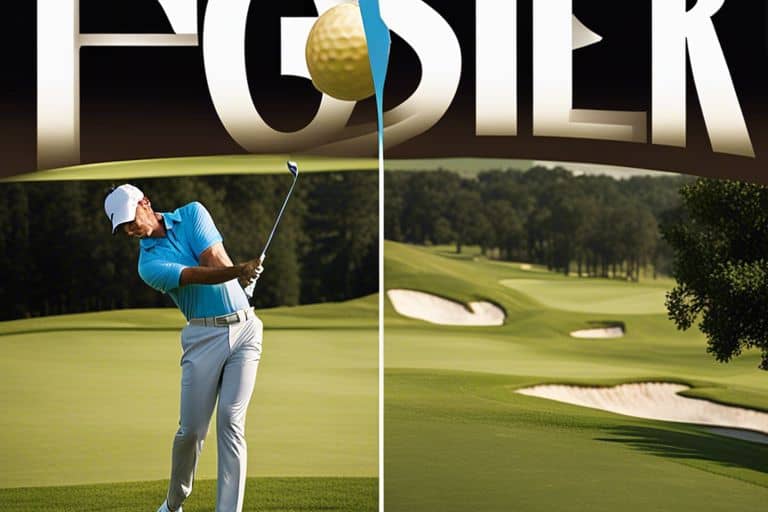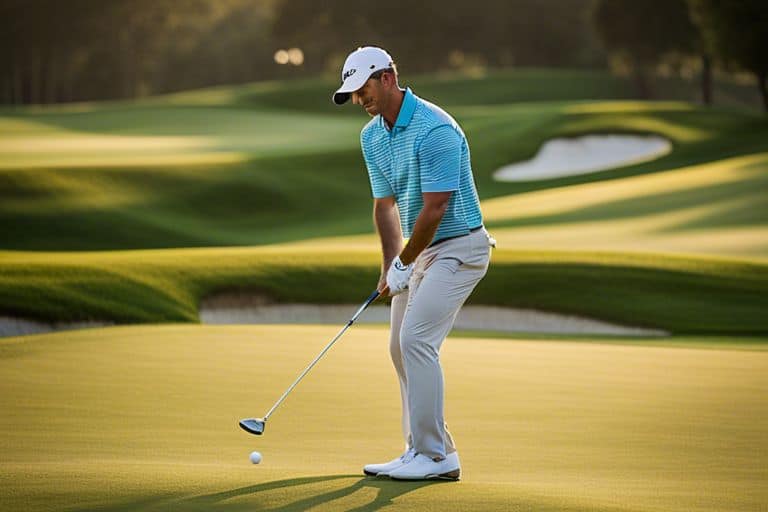What is the difference between a shank and a hosel rocket in golf?
Perplexed by the difference between a shank and a hosel rocket in golf? It can be a confusing distinction, but understanding the nuances between the two can greatly benefit your game. A shank and a hosel rocket are both dreaded mishits on the golf course, but they are actually different in nature.
A shank is a shot that strikes the hosel of the club, sending the ball sharply to the right (for right-handed golfers), while a hosel rocket occurs when the ball comes into contact with the hosel and is sent off to the right in a low trajectory. Understanding the cause and effect of each type of mishit can help you troubleshoot and improve your swing techniques. Stay tuned to learn more about these frustrating but fixable errors in golf!
Exploring the Shank
Your golf game can be greatly affected by shanks, so understanding what they are and how to avoid them is crucial for your success on the course.
Definition and Characteristics of a Shank
A shank in golf occurs when the ball is struck by the hosel of the club rather than the clubface. This results in the ball shooting off to the right (for right-handed golfers) at a sharp angle, often leading to a poor shot. The sound and feel of a shank are distinctly different from a well-struck shot, and it can be a frustrating experience for any golfer.
Common Causes of Shank Shots in Golf
Shanks can be caused by a number of factors, including poor setup, excessive movement in the swing, or an incorrect weight shift during the downswing. The most common cause, however, is a movement of the clubhead away from the body during the downswing, bringing the hosel into contact with the ball. It’s important to note that shanks can happen to golfers of all skill levels, and understanding their causes can help in preventing them.

Unpacking the Hosel Rocket
Obviously, understanding the difference between a shank and a hosel rocket in golf is crucial for any golfer looking to improve their game. In this chapter, I will delve into the specifics of a hosel rocket, how it differs from a shank, and what you can do to avoid it.
What is a Hosel Rocket?
A hosel rocket is a shot that occurs when the golf ball strikes the hosel of the club, causing the ball to shoot off to the right (for a right-handed golfer) in a sharp, unpredictable manner. The hosel is the part of the club where the shaft meets the clubhead, and a hosel rocket is a result of the ball making contact with this area.
How Hosel Rockets Differ from Shanks
While a hosel rocket and a shank may seem similar, they are actually two distinct issues. A shank occurs when the ball strikes the hosel of the club, causing it to veer off to the right (for a right-handed golfer). On the other hand, a hosel rocket is when the ball strikes the hosel, causing it to shoot off at a much sharper, more unpredictable angle. Both are undesirable results, but the hosel rocket is generally considered to be more severe and difficult to correct.
Impact on Your Game
Consequences of Hitting a Shank
When you hit a shank, the impact on your game can be devastating. I’m sure you’re familiar with the sinking feeling that comes with watching your ball veer sharply off course, often veering off at a 90-degree angle. Not only does it cause a significant loss in distance, but it can also dent your confidence and alter the flow of your round. Shanking can be extremely frustrating and it can disrupt your rhythm and focus, resulting in a negative impact on your overall performance.
Effects of Hosel Rockets on Golf Performance
On the other hand, when you hit a hosel rocket, the effects on your golf performance can also be damaging. I’ve often found that the ball shoots off to the right at a low trajectory, resulting in a loss of distance and accuracy. The hosel rocket can be extremely frustrating and cause significant issues with scoring. It can diminish your confidence and make it difficult to recover for the rest of the round. Additionally, hitting hosel rockets frequently can result in a negative impact on your overall golf performance, making it difficult to achieve your best results on the course.
Strategies for Improvement
However, once you have identified whether you are dealing with shanks or hosel rockets in your golf game, it’s important to implement strategies to improve your technique and eliminate these frustrating shots from your game. With the right correction techniques and preventive measures, you can make significant progress in minimizing these undesirable outcomes.
Correction Techniques for Shank Shots
When you find yourself consistently hitting shank shots, it can be a frustrating experience. One effective technique to correct this issue is to focus on the position of your clubface at impact. Make sure that the leading edge of the clubface is striking the ball instead of the hosel. Another helpful correction technique is to adjust your posture and stance. Ensure that your body and club are properly aligned, and practice some drills specifically targeting the shank issue to help retrain your muscle memory.
Preventing Hosel Rockets in Your Swing
If you are struggling with hosel rockets, it’s important to note that a major cause of this problem is an out-to-in swing path. By correcting this path and focusing on swinging from the inside, you can significantly reduce the likelihood of hitting hosel rockets. It’s also important to be mindful of your setup and positioning. Ensure that your club shaft is not too steep at address and keep a proper distance between your body and the ball. Practicing a smooth, shallow swing will help prevent hosel rockets from creeping into your game.
Conclusion
Considering all points, it is clear that the difference between a shank and a hosel rocket in golf lies in the point of contact with the club face. A shank occurs when the ball is struck on the hosel of the club, resulting in a wayward shot while a hosel rocket refers to a shot that comes off the hosel at a steep angle.
It is important to note that both of these shots are undesirable and can be detrimental to your game. Understanding the difference between these two types of miss-hits can help you diagnose and correct your swing to improve your overall performance on the course.






